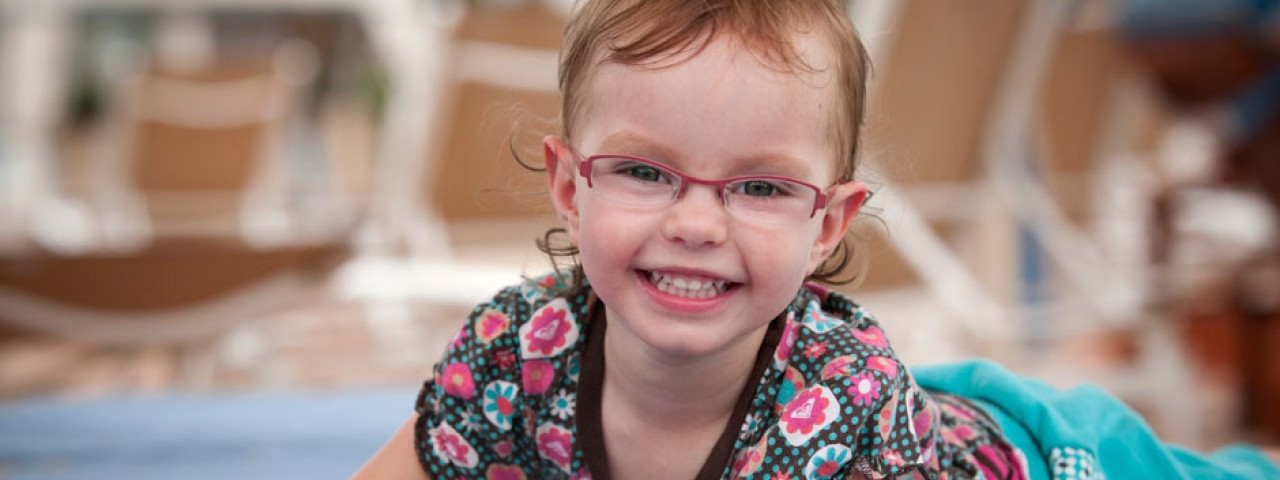The Importance of Stimulating a Child's Vision
- Tweet

The growth of sensory pathways responsible for vision and hearing are some of the earliest processes of brain development in infants.1 We know that hearing development is a critical component for optimal early childhood brain development, but vision development also plays a significant role. In neuro-typical development, children interact with the world through their eyes and ears. At the same time, many children do not experience the optimal development of these key processes. Research indicates one in three infants from families in poverty have vision impairments,1 and that means many children in Memphis are at risk for developing vision difficulties. In order to lessen the risk of visual impairments in Memphis children, parents must understand the sequential progression of visual development and the importance of early vision screenings.
Expectations for Vision Development
Vision rapidly develops during the first six to eight months of a child’s life.3 During this sensitive period the occipital lobe, which is responsible for processing visual information, is expanding rapidly. Parents can actually help their children’s vision development through a number of simple activities that can be incorporated into daily activities. By recognizing important milestones in vision development, parents are able to to identify warning signs of potential vision deficits.
- Newborns: A newborn’s vision is relatively fuzzy. At first, your new baby is able to see light, movement, and general shapes in their immediate surroundings. Babies tend to shift their eyes toward windows or other sources of light, as the contrast attracts their attention. Wandering eyes are a normal step in the developmental process, as newborns have yet to learn how to fix both eyes on a single object.3 A newborn can differentiate images that are a few feet away. Since they are only able to see nearby images at first, a baby needs plenty of up-close “face time” with their parents in order to establish familiarity, and contribute to their sense of security.
- One to two months: During the first few months of life a baby develops the ability to focus both eyes and track moving objects. Color differences become clearer to a two-month-old baby as she is able to distinguish between primary colors.3 Parents can help this development by sharing colorful pictures, books, and toys with their child.
- Four to five months: During this period, a baby’s depth perception starts to develop, allowing her to tell how far away she is from the toy she wants. Meanwhile, she is gaining more control over her arms. This is a powerful combination, allowing her to grab favorite toys and books on her own! At five months, a baby is better able to closely examine objects, noticing small details and features. At this age, an infant is able to recognize familiar objects after a partial glimpse of it.3 Playing peek-a-boo and partially hiding a favorite toy under a blanket encourages development of this skill. This is the time at which infants are learning about object permanence, the understanding that objects continue to exist even when they are no longer in sight.
- Eight to nine months: By eight months, your child’s vision is almost as acute as an adult’s. Longer distance sight further develops, allowing children at this age to identify objects and individuals across the room. Vision becomes sharper and more well-defined by nine months.3 A baby at this age tends to point to and ask for nearby objects.
- One year: Depth perception has fully developed at this age. A one year old can tell the difference between “near” and “far”.3 As a child is able to visually navigate their own around the home, hide-and-seek is an enjoyable game for children of this age to engage in.
Prevention and Treatment Efforts
Parents support optimal early vision development naturally – by interacting with their babies and play with books, and toys. All of these activities stimulate a baby’s visual growth. Still, some children will not meet these benchmarks of visual development, and may be candidates for early intervention. Vision examinations between 6 and 12 months of age can detect delays and facilitate interventions to reduce possible developmental difficulties.1 Vision tests are generally performed before leaving the hospital when a child is first born. Additional checks are performed during well-baby checks (when the baby is 6-8 weeks old), provide opportunities to detect potential delays. Early identification and treatment of certain visual challenges before age three can lead to a 95% recovery of vision.5
Impact of Vision Impairments
Many children will reach school without knowing they have a vision problem. They may believe that they see just as others do, leading them to compensate for their difficulties rather than alert a parent or teacher in order to resolve the issue.4 For their part, teachers may interpret symptoms of vision difficulties as behavioral or learning problems instead of visual impairments.4 This mislabeling not only fails to recognize the real issue at hand, but also places children in services and programs that do not meet their needs and learning styles.
Sight not only helps a child interpret their surroundings, but it is a key part of other processes. Sight contributes to balance, motor skills, and helps to establish bonds with parents and other caregivers.5 Early problems in vision development can lead to other developmental difficulties. Untreated, vision problems can become academic, social and emotional problems.References:
